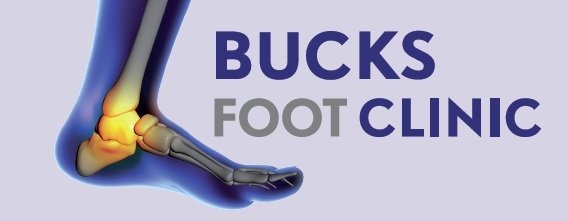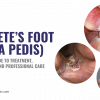
Podiatrist Approved Hacks High Heels Without the Pain
For countless women across the UK, high heels represent a frustrating paradox the confidence and elegance they provide comes at the price of aching feet, burning balls of feet, and throbbing pain that can last days after wearing them. Yet understanding how to wear high heels without pain isn’t about abandoning your favourite shoes; it’s about implementing scientifically-backed strategies that podiatrists use to help their patients maintain both style and foot health. This comprehensive guide reveals professional secrets for pain-free heel wearing, explores the best shoes for heel pain women can choose, and explains why expert podiatric care can transform your relationship with fashionable footwear.
The Biomechanics of High Heel Pain
Understanding why heels hurt is the first step to preventing pain. When you wear high heels, your body weight shifts dramatically forward a 3-inch heel forces 75% of your body weight onto the balls of your feet, compared to the normal 25%. This pressure concentration increases exponentially with heel height, with 4-inch heels directing nearly 90% of weight to the forefoot.
This unnatural weight distribution creates a cascade of biomechanical changes throughout your body. Your centre of gravity shifts forward, forcing your lower back to arch excessively to maintain balance. Your knees hyperextend, your hip flexors tighten, and your calf muscles remain in constant contraction. These compensatory adjustments explain why heel pain often extends beyond just your feet, affecting your entire musculoskeletal system.
Additionally, the rigid soles of most high heels eliminate your foot’s natural shock absorption mechanism. Every step sends impact forces directly through your skeletal system rather than being dampened by the foot’s arch and soft tissues.
The Hidden Damage You Don’t Feel Yet
Perhaps more concerning than immediate pain is the cumulative damage that occurs without obvious symptoms. Regular high heel wear progressively shortens your Achilles tendon and calf muscles. This adaptive shortening can become permanent, making flat shoes uncomfortable and creating a vicious cycle where heels become necessary for comfort a phenomenon podiatrists regularly see in long-term heel wearers.
The altered gait pattern heels create increases wear on specific joint surfaces, potentially accelerating osteoarthritis development in feet, knees, and hips. Studies show that women who regularly wear heels have twice the risk of developing knee osteoarthritis compared to those who don’t. These changes occur gradually over years, with damage accumulating silently until pain and limitation become unavoidable.
Chronic heel wearing also weakens the intrinsic foot muscles that maintain arch integrity and provide dynamic stability. This muscular atrophy contributes to progressive flat foot development, plantar fasciitis vulnerability, and decreased balance issues that persist even when you’re not wearing heels.
How to Prevent High Heel Pain: Professional Strategies
- Master the 2-Hour Rule
Limit continuous heel wearing to two-hour intervals. After each interval, if possible, remove your shoes for five minutes, perform ankle circles and calf stretches, and massage your feet briefly. This prevents excessive tissue compression and maintains circulation. For events requiring extended heel wearing, identify opportunities to sit and discretely slip shoes off under tables.
- Implement Strategic Height Rotation
Avoid wearing the same heel height daily. Alternate between different heights throughout the week if you wear 3-inch heels Monday, opt for 2-inch Tuesday, and give your feet a complete break with flats midweek. This variation prevents repetitive stress on identical structures and allows tissue recovery between wearing sessions.
- Pre-Event Foot Preparation
Two days before a heel-wearing event, begin preparing your feet. Stretch your calves and Achilles tendons for five minutes twice daily. Apply thick moisturiser to prevent friction blisters. The night before, elevate your feet for 20 minutes to ensure they’re not pre-swollen. These simple preparations significantly reduce pain development.
- Choose Your Battles Wisely
Reserve highest heels for occasions involving minimal walking or standing. For commuting, shopping, or events requiring extended standing, choose lower, chunkier heels or wedges that distribute weight more evenly. Keep glamorous but painful heels for seated dinners or brief photo opportunities rather than all-day wear.
- Strengthen Preventively
Incorporate foot-strengthening exercises into your routine three times weekly. Toe curls with a towel, marble pickups, and single-leg balance exercises strengthen the muscles that high heels weaken. Stronger feet better resist the deforming forces heels create, reducing both immediate pain and long-term damage.
- Professional Preventive Care
Schedule regular podiatric assessments if you frequently wear heels. The HCPC-registered podiatrists at Bucks Foot Clinic can identify developing problems before they become painful, provide preventive treatments, and create custom orthotics designed specifically for heel wearers.
Why Professional Podiatry Beats DIY Solutions
Biomechanical Analysis
Professional podiatrists perform comprehensive gait analysis that reveals how your unique foot structure responds to heel wearing. The qualified team at Bucks Foot Clinic, all holding B.Sc. Podiatric Medicine degrees, use pressure mapping technology to identify your specific high-pressure areas and compensation patterns. This individualised assessment guides targeted interventions far more effective than generic solutions.
Understanding your particular vulnerabilities whether you’re prone to neuromas, have hypermobile joints, or demonstrate excessive pronation allows for personalised prevention strategies. What works for your colleague might worsen your problems if your biomechanics differ.
Custom Orthotic Solutions
The bespoke orthotics created at Bucks Foot Clinic can be designed specifically for high heel wear. These ultra-slim devices redistribute pressure from painful metatarsal heads, support the arch without adding bulk, and can even incorporate materials that reduce shear forces. Unlike shop-bought gel inserts that simply add cushioning, professional orthotics address the mechanical causes of your specific pain patterns.
Their HCPC-registered podiatrists understand how to balance correction with the spatial constraints of fashionable footwear. They can create different orthotics for various heel heights, ensuring optimal support whether you’re wearing stilettos or kitten heels.
Advanced Pain Management
Professional podiatrists offer treatments unavailable over the counter. Corticosteroid injections for neuromas or capsulitis can provide months of relief, allowing you to wear heels for special occasions without suffering. Prescription anti-inflammatory medications, custom padding techniques, and professional taping methods offer superior pain control compared to pharmacy remedies.
Corrective Treatments
When heel wearing has already caused problems bunions, hammertoes, neuromas professional intervention can prevent progression and manage symptoms. Simple procedures like corn removal or ingrown toenail correction might seem minor but can make the difference between tolerating heels and abandoning them entirely.
Long-term Foot Health Planning
Podiatrists provide comprehensive foot health strategies that account for your lifestyle, including heel wearing. They can advise on the cumulative effects of your footwear choices, recommend specific exercises to counteract heel-wearing damage, and monitor for developing problems. This proactive approach prevents minor issues from becoming major limitations.
How to Fix Immediate High Heel Pain
- The Ball of Foot Burn
For immediate metatarsalgia relief, apply ice to the ball of foot for 10 minutes after heel wearing. Use metatarsal pads positioned just behind (not under) the painful area to redistribute pressure. Consider gel or silicone metatarsal cushions, but position them correctly too far forward increases rather than decreases pressure. For persistent pain, professional assessment can identify whether you’re developing neuromas or stress fractures requiring specific treatment.
- Achilles and Calf Agony
Perform eccentric calf stretches immediately after removing heels: stand on a step with heels hanging off, rise onto tiptoes, then slowly lower below step level. Hold for 30 seconds, repeat five times. Follow with gentle massage using a tennis ball under your calf. Apply heat (not ice) to tight calf muscles to promote relaxation and blood flow. If morning heel pain persists, you might be developing plantar fasciitis requiring professional intervention.
- Toe Crushing and Deformity
Never ignore toe pain from narrow toe boxes. Use individual toe separators overnight to counteract daily compression. Apply cushioned corn pads to protect pressure points, but avoid medicated corn removers which can cause chemical burns. For developing bunions or hammertoes, seek professional advice immediately early intervention can prevent progression requiring surgery.
- Ankle Instability and Wobbling
Strengthen ankle stabilisers with daily balance exercises: stand on one foot for 30 seconds, progress to eyes closed, then unstable surfaces. Use ankle support straps or tape for important events if you’re prone to rolling ankles. Consider heels with ankle straps for additional stability. Chronic instability might indicate ligament damage requiring professional assessment and rehabilitation.
- Lower Back Pain
Address heel-related back pain with targeted stretches: hip flexor lunges, gentle spinal twists, and cat-cow poses help counteract the excessive lordosis heels create. Strengthen your core with planks and bridges to better support your spine during heel wearing. Persistent back pain might indicate compensatory patterns requiring professional biomechanical correction.
- Burning or Numb Toes
Numbness or burning suggests nerve compression likely Morton’s neuroma developing between your third and fourth toes. Immediately switch to wider shoes and use metatarsal pads to spread the metatarsal heads. Massage between the metatarsals to mobilise compressed nerves. If symptoms persist beyond a few days, professional assessment is crucial as neuromas can become permanent without proper treatment.
Choosing the Best Shoes for Heel Pain Women Should Consider
Heel Architecture Matters
Platform soles reduce the effective heel height a 4-inch heel with 1-inch platform creates the same angle as a 3-inch heel, significantly reducing forefoot pressure. Chunky heels provide better weight distribution than stilettos, whilst wedges offer maximum stability and pressure distribution. T-bar or ankle straps prevent excessive foot sliding forward, reducing toe compression.
Material Selection
Leather uppers stretch and mould to your foot shape, reducing pressure points. Avoid rigid synthetic materials that don’t accommodate natural foot swelling throughout the day. Cushioned leather insoles provide better shock absorption than synthetic alternatives. Suede-lined shoes reduce friction and blister formation.
Optimal Heel Heights
Research shows 2-inch heels actually improve lumbar spine positioning for many women, making them potentially more comfortable than completely flat shoes. The “perfect” heel height equals the distance from your heel to the ball of your foot when pointing your toes usually between 2.5-3 inches for most women. Anything above this height exponentially increases problems.
Time-of-Day Shopping
Shop for heels in the late afternoon when feet are naturally swollen. Ensure there’s adequate room in the toe box you should be able to slightly wiggle your toes. The heel counter should fit snugly without slipping. Walk on hard surfaces in the shop, not just carpet, to assess true comfort.
Advanced Strategies for Committed Heel Wearers
The Training Programme
Like athletes training for events, you can condition your feet for occasional heel wearing. Start with 30-minute sessions in low heels, gradually increasing height and duration over weeks. This progressive adaptation allows tissues to strengthen and adapt rather than being shocked by sudden extended wear.
Strategic Padding Placement
Learn professional padding techniques: place moleskin on areas prone to blisters before they develop. Use silicone heel grips to prevent slipping and reduce friction. Apply antiperspirant to feet to reduce moisture and friction. These preventive measures work far better than treating problems after they develop.
The Recovery Routine
Develop a post-heel recovery routine: soak feet in Epsom salt baths, perform yoga poses like legs-up-the-wall, and use a frozen water bottle to roll under your arches. This routine prevents minor inflammation from becoming chronic problems.
Seasonal Considerations
Summer’s heat causes foot swelling, making heels more painful. Choose open-toed styles and size up slightly. Winter requires attention to non-slip soles for safety. Transition seasons offer opportunities to gradually reintroduce heels after breaks, allowing progressive adaptation.
When to Seek Professional Help
Certain symptoms indicate need for professional podiatric assessment: pain persisting more than 48 hours after wearing heels, visible deformities developing, recurring corns or calluses despite padding, numbness or tingling in toes, or inability to wear previously comfortable shoes.
Don’t wait for severe problems to develop. Regular podiatric care for heel wearers is like dental check-ups prevention and early intervention save pain and expense later. The earlier problems are addressed, the more options exist for correction without abandoning heels entirely.
Conclusion: Achieving the Perfect Balance
Learning how to wear high heels without pain requires understanding your feet’s unique needs, implementing professional strategies, and knowing when to seek expert help. The best shoes for heel pain women choose combine style with biomechanical support, proving that fashion and foot health aren’t mutually exclusive.
Your feet perform an extraordinary balancing act in heels, deserving proper care and professional attention. By implementing these podiatrist-approved strategies, you can enjoy the confidence and elegance heels provide without sacrificing your foot health or suffering unnecessary pain.
Transform Your Heel-Wearing Experience at Bucks Foot Clinic
Stop suffering in silence with heel pain. The HCPC-registered podiatrists at Bucks Foot Clinic understand the importance of maintaining your lifestyle whilst protecting your foot health. All clinicians hold B.Sc. Podiatric Medicine degrees, providing expert assessment and treatment specifically tailored for heel wearers.
Their comprehensive approach includes biomechanical analysis, custom orthotics designed for fashionable footwear, and professional treatments that address both immediate pain and long-term foot health. Whether you need preventive care or solutions for existing problems, their expertise can revolutionise your relationship with high heels.
Contact Bucks Foot Clinic today:
- Phone: 01494 434366
- Website: www.bucksfootclinic.com
- Address: 18 Woodside Rd, Amersham HP6 6AJ
- Opening Hours: Monday-Friday 9:00-17:00, Saturday 9:00-13:00
Book your high-heel consultation today and discover how professional podiatric care can keep you standing tall without the pain. Their bespoke solutions and expert guidance ensure you never have to choose between style and comfort again.
High Heels Comfort – FAQs
Q: Why do high heels often cause foot pain?
A: High heels shift your weight forward, increasing pressure on the toes and ball of the foot, which can lead to pain and discomfort.
Q: Can I make wearing high heels more comfortable?
A: Yes. With the right tips and adjustments, you can reduce foot pain while wearing heels.
Q: What type of heel is usually more comfortable?
A: Lower heels and those with a wider heel base tend to be more stable and comfortable.
Q: How does shoe fit affect heel comfort?
A: A well-fitting shoe reduces rubbing, pressure points, and slipping, making heels feel more comfortable.
Q: Do cushioned insoles help when wearing high heels?
A: Yes. Cushioned pads or insoles can absorb shock and reduce pressure on painful areas.
Q: What can I do to reduce pain while standing in heels?
A: Shift weight between feet, take breaks to sit, and avoid standing for very long periods.
Q: Are foot stretches useful after wearing heels?
A: Yes. Stretching your calves and feet can relieve tension and soreness after wearing heels.
Q: Should I alternate shoes during a long day?
A: Yes. Switching to lower-heeled or more supportive shoes helps reduce stress on your feet.
Q: When should I see a podiatrist about heel pain?
A: If pain is frequent, doesn’t improve after rest, or affects your walking, see a podiatrist for advice.








Recent Comments